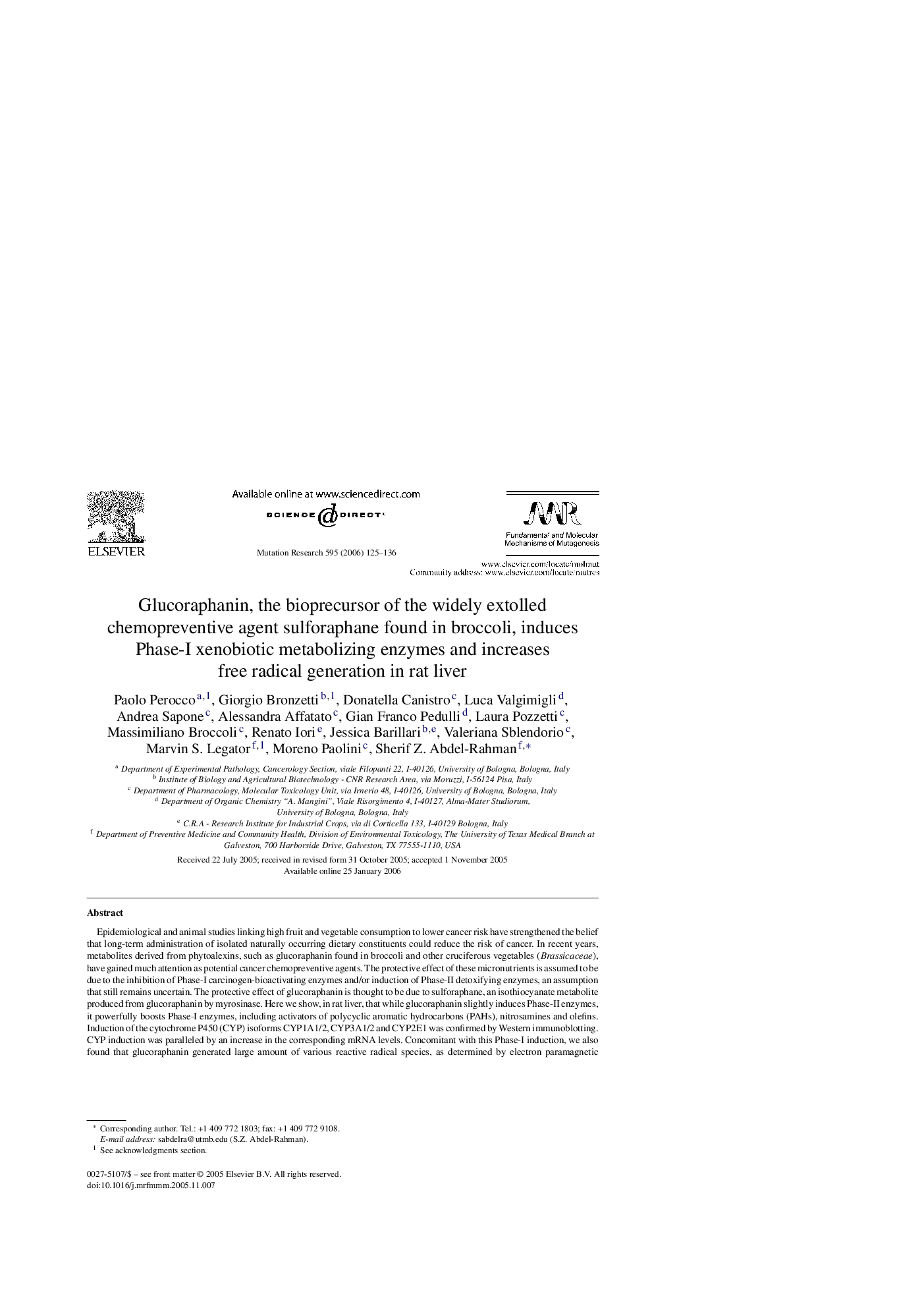| کد مقاله | کد نشریه | سال انتشار | مقاله انگلیسی | نسخه تمام متن |
|---|---|---|---|---|
| 2147666 | 1548423 | 2006 | 12 صفحه PDF | دانلود رایگان |
عنوان انگلیسی مقاله ISI
Glucoraphanin, the bioprecursor of the widely extolled chemopreventive agent sulforaphane found in broccoli, induces Phase-I xenobiotic metabolizing enzymes and increases free radical generation in rat liver
دانلود مقاله + سفارش ترجمه
دانلود مقاله ISI انگلیسی
رایگان برای ایرانیان
کلمات کلیدی
موضوعات مرتبط
علوم زیستی و بیوفناوری
بیوشیمی، ژنتیک و زیست شناسی مولکولی
تحقیقات سرطان
پیش نمایش صفحه اول مقاله

چکیده انگلیسی
Epidemiological and animal studies linking high fruit and vegetable consumption to lower cancer risk have strengthened the belief that long-term administration of isolated naturally occurring dietary constituents could reduce the risk of cancer. In recent years, metabolites derived from phytoalexins, such as glucoraphanin found in broccoli and other cruciferous vegetables (Brassicaceae), have gained much attention as potential cancer chemopreventive agents. The protective effect of these micronutrients is assumed to be due to the inhibition of Phase-I carcinogen-bioactivating enzymes and/or induction of Phase-II detoxifying enzymes, an assumption that still remains uncertain. The protective effect of glucoraphanin is thought to be due to sulforaphane, an isothiocyanate metabolite produced from glucoraphanin by myrosinase. Here we show, in rat liver, that while glucoraphanin slightly induces Phase-II enzymes, it powerfully boosts Phase-I enzymes, including activators of polycyclic aromatic hydrocarbons (PAHs), nitrosamines and olefins. Induction of the cytochrome P450 (CYP) isoforms CYP1A1/2, CYP3A1/2 and CYP2E1 was confirmed by Western immunoblotting. CYP induction was paralleled by an increase in the corresponding mRNA levels. Concomitant with this Phase-I induction, we also found that glucoraphanin generated large amount of various reactive radical species, as determined by electron paramagnetic resonance (EPR) spectrometry coupled to a radical-probe technique. This suggests that long-term uncontrolled administration of glucoraphanin could actually pose a potential health hazard.
ناشر
Database: Elsevier - ScienceDirect (ساینس دایرکت)
Journal: Mutation Research/Fundamental and Molecular Mechanisms of Mutagenesis - Volume 595, Issues 1â2, 20 March 2006, Pages 125-136
Journal: Mutation Research/Fundamental and Molecular Mechanisms of Mutagenesis - Volume 595, Issues 1â2, 20 March 2006, Pages 125-136
نویسندگان
Paolo Perocco, Giorgio Bronzetti, Donatella Canistro, Luca Valgimigli, Andrea Sapone, Alessandra Affatato, Gian Franco Pedulli, Laura Pozzetti, Massimiliano Broccoli, Renato Iori, Jessica Barillari, Valeriana Sblendorio, Marvin S. Legator,